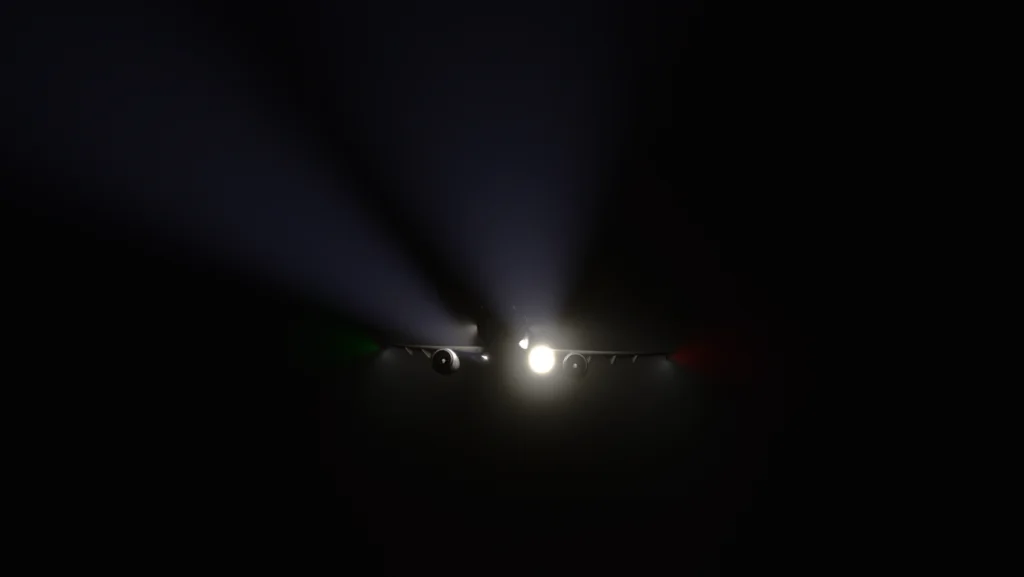
Waren Effektpakete für Flugzeuge im P3D noch die Domäne von Parallel 42, scheint es im MSFS nun einen neuen Player auf dem Spielfeld zu geben. Denn Southoakco hat schon für einige MSFS Flieger Effekte erstellt und als Paket veröffentlicht. Das neuste Paket widmet sich nun dem iniBuilds A310.
Um die A310 Real Effects Plus nutzen zu können, benötigt ihr natürlich den iniBuilds A310, welcher kostenlos verfügbar ist. Die Effekte aus dem Paket treten dann bei bestimmten Situationen oder Flugzuständen zutage. Das Paket ist, mit einem Preis unter 10 €, auf simMarket zu bekommen und wird bald auch im Marketplace erhältlich sein. Um euch einen Eindruck zu verschaffen, haben wir das Werbevideo unten verlinkt.
Cockpit Effects:
- Saint Elmo’s Fire (Windscreen Static): Replicating the dangers of flying near thunderstorms, this beautiful display of static electricity flashing on your cockpit windows is a sight to be seen.
- Windscreen Bug Splatter: Yes, we did! Why bug splatter? Because bug splatter is a real, and real pilots have to squint through a dirty windscreen every time they fly. Ever tried to see a narrow runway with the setting sun blasting the bug smashed windscreen? Go ahead, airplanes are nicknamed „Bug Smashers“ for good reason. Flying insects are most active in warm temperatures around sunset, you’ll certainly see more bug splatter on your windscreen then.
Engine Effects:
- Engine Intake Vortices: Reactive to engine power, humidity, airspeed, temperature, air density, and surface moisture. When the conditions are right, these miniature tornados are spectacular to watch as they pour into the engine.
- Engine Intake Condensation: Reactive to engine power, humidity, airspeed, temperature, air density, and altitude.
- Jet Blast: Reactive to your engine speed. Jet engines are powerful, contaminated surfaces (water and snow) bring this power to light.
- Reverse Thrust: On a wet or snowy runway, watch as thrust is rapidly switched directions when your engine enters reverse thrust.
- Engine Fires: Set through your MSFS Aircraft Failure Customization menu. When is the last time you had to land single engine?
- Contrails: Out with the old, in with the new. Say goodbye to the default contrails. Our contrails depict the rotating wake turbulence behind an aircraft, and they look great.
- Engine and APU Startup Smoke: Jet engine starts nearly always produce smoke during startup. Excess fuel is sprayed into the engine during the ignition stage, and it comes out of the exhaust as smoke.
- Engine and APU Cold Starts: When the environment is cold enough, aircraft require cold weather startup procedures to prevent engine damage. Marvel at your engine and APU startup exhaust with this effect.
Airframe Effects:
- Wing Condensation: Reactive to aircraft pitch, humidity, airspeed, temperature, air density, and altitude. High pressure below the wing to the low pressure above the wing is visually stunning when the conditions are right.
- Flap Trailing Vortices: Reactive to flap angle, aircraft pitch, humidity, airspeed, temperature, air density, and altitude. No, this is not a fuel leak, it is aerodynamics at work. These trails of moisture look even better from an aircraft cabin window.
- Brake Smoke: If your brakes are smoking, you’ve got hot brakes. A heavy aircraft, hard braking, and hot temperatures will cause this.
- Volumetric Landing Lights: Too dark to see if you’re in a cloud while flying? Turn on your landing lights. If you see your light beams illuminating the cloud, you’ve found your answer. Real pilots do this routinely, especially when concerned about icing. Default MSFS landing lights will not do this, but our effect will.
- Tail Strike, Wingtip Strike, Engine Nacelle Strike: Gusty crosswinds are a recipe for a wingtip or nacelle strike. Watch your landing attitude, don’t strike the tail! A plane spotter will see the effects of your aluminum scraping, thanks to this effect.
- Fuel Vent Dripping: Airplane fuel systems all have vents. Warm temperature causes fuel to expand. If your fuel tanks are full and they warm up in the heat, fuel is going overboard. There’s plenty of airport ramp stains to prove this. This effect does this, though it does not come with a fuel spill cleanup kit.

